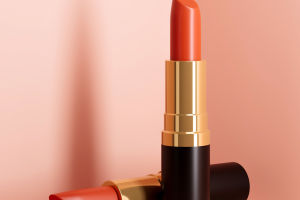Dried flowers have long been cherished for their beauty and sentimental value.
Whether they are from a wedding bouquet, a special gift, or a home-grown garden, preserving these flowers ensures that their beauty and memories can be enjoyed for years to come.
Here are some effective methods to preserve dried flowers and make them last longer.
1. Choosing the Right Flowers
Not all flowers dry well. The best candidates for drying are those with low moisture content and sturdy petals. Examples include roses, lavender, statice, and baby’s breath. Begin by selecting flowers at their peak bloom, as this is when they are most vibrant and colorful.
2. Air Drying
Air drying is one of the oldest and simplest methods for preserving flowers. To air dry flowers:
- Bundle: Gather the flowers into small bundles and secure the stems with a rubber band or twine.
- Hang: Hang the bundles upside down in a well-ventilated, dark place. A dark environment helps to preserve the color of the flowers.
- Wait: Allow the flowers to dry for two to three weeks. Once they are dry, they will feel papery and brittle to the touch.
3. Silica Gel Drying
Silica gel is a desiccant that can be used to preserve flowers while maintaining their shape and color more effectively than air drying. Here’s how to use silica gel:
- Prepare: Fill a container with a layer of silica gel.
- Bury: Place the flowers in the container, and gently cover them with more silica gel, ensuring that the petals are fully supported and not crushed.
- Seal: Seal the container and leave it for a week or until the flowers are completely dry.
4. Pressing Flowers
Pressing flowers is another traditional method, ideal for smaller blooms and leaves. This technique is perfect for creating framed artwork or decorating cards.
- Arrange: Place the flowers between sheets of parchment paper or blotting paper.
- Press: Insert the paper with flowers inside a heavy book or a flower press.
- Wait: Leave the flowers to press for about two to three weeks. They will be flat and ready for display or crafting.
5. Microwave Drying
For a quicker method, you can use a microwave to dry flowers. This method is especially useful for maintaining the flower’s color and structure.
- Prepare: Place the flowers between two microwave-safe plates, with a weight on top to press them slightly.
- Heat: Microwave on low heat for short intervals, checking the flowers regularly to prevent burning.
- Finish: Once dry, allow the flowers to cool before handling.
6. Glycerin Preservation
Glycerin can be used to keep flowers soft and pliable while preserving their appearance. This method is particularly effective for foliage and branches.
- Mix: Prepare a solution of one part glycerin to two parts water.
- Submerge: Place the stems of the flowers or foliage in the solution.
- Absorb: Allow the plants to absorb the solution for two to three weeks. The flowers will become darker in color and more flexible.
7. Using Hairspray
After drying your flowers using any of the above methods, applying a light coat of hairspray can help protect them from dust and moisture.
- Spray: Hold the dried flowers at arm’s length and spray lightly with an aerosol hairspray.
- Dry: Allow the flowers to dry completely before arranging them.
8. Storage and Display
Proper storage and display are crucial for maintaining the longevity of dried flowers.
- Avoid Sunlight: Display dried flowers away from direct sunlight to prevent fading.
- Reduce Humidity: Keep dried flowers in a cool, dry place to avoid mold and mildew.
- Dust Regularly: Gently dust the flowers with a soft brush or a hairdryer on a cool, low setting.
Preserving dried flowers is a wonderful way to keep memories alive and bring natural beauty into your home. By choosing the right preservation method and taking care of your dried flowers, you can enjoy their charm for many years. Whether you prefer the simplicity of air drying or the precision of silica gel, these techniques will help you create lasting floral keepsakes.


